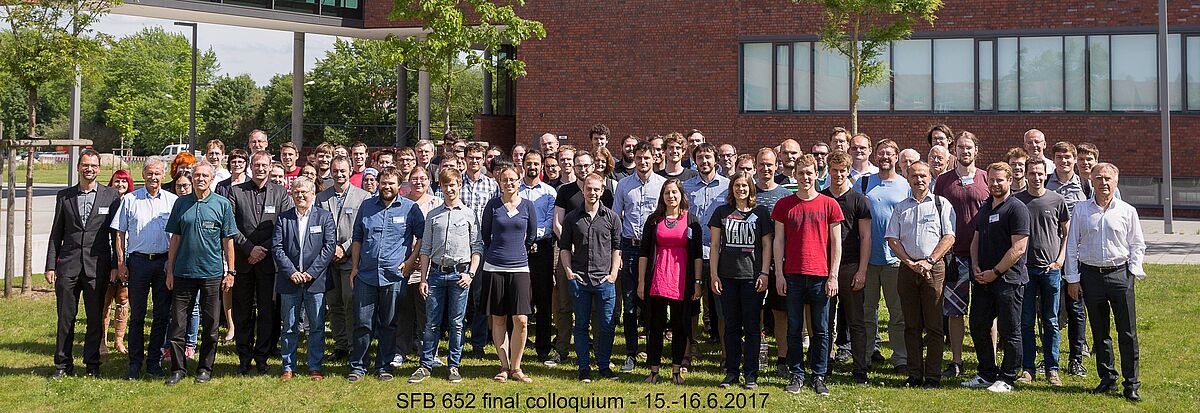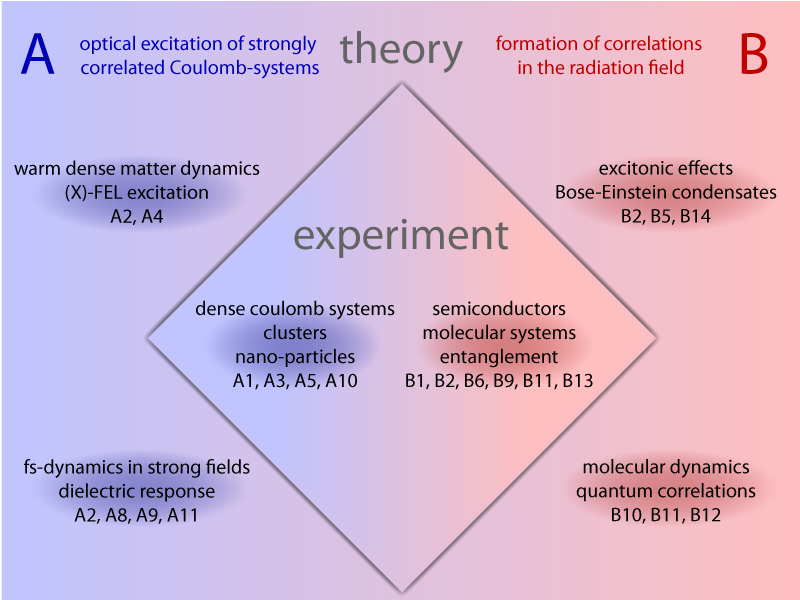SFB 652: Strong correlations and collective effects
Strong correlations and collective effects in radiation fields: Coulomb systems, clusters and particles
The phenomena of the world that surrounds us are intimately connected with quantum physics. One of the main challenges of modern science is to understand and harness those connections. Over the last decades, physics research has been able to unlock important aspects of the complex interplay between particles and fields that takes place in the microscopic world of atoms and molecules, and to uncover the correlations and quantum effects associated with them. At present, physical processes can be directly observed on atomic length scales of 10-10 m and be followed on ultrashort timescales of 10-15 s. Electromagnetic radiation fields proved to be the most important and effective tool. Moreover, significant innovations in the realm of physics have only been possible with the development of novel light sources. For example, femtosecond lasers are the prerequisite for the observation of ultrafast processes and the physics in strong fields. Due to their intense x-ray pulses, free-electron lasers provide completely new insight into the structure of complex molecules and aggregates as well as into intra-atomic processes and their dynamics. The programme of the collaborative research center SFB 652 was devoted to all facets of correlations in radiation fields with the central aim to study interactions in complex systems under the influence of light. Typical examples of such systems are extended Coulomb systems, clusters and particles as well as molecular aggregates that are being investigated both theoretically and experimentally in an integrated fashion. The behavior of electrons and ions, atoms and molecules as well as quasiparticles that have been created by excitations with light is often strongly correlated. This means that their reactions to the radiation field are not independent of one another. In fact, the single-particle character can completely vanish under certain conditions; the result is a collective and often massively enhanced response of the system to the impinging radiation field. Particularly interesting are condensates in which all particles populate the same quantum state.
The central aim of the SFB 652 has been to uncover these correlations and control them using the radiation field. In order to achieve this goal, novel experimental techniques such as active pulse shape control or x-ray-Thomson scattering has been employed. On the theoretical side, the quantum nature of light is consistently taken into account by means of quantum optical methods, the range of methods in many-body theory was expanded, and novel simulation techniques have been implemented. One of the systems under investigation are clusters, which are tiny objects consisting of only a limited number of atoms, that can be used as nanolabs for the study of matter in extreme radiation fields. An example of a strongly correlated Coulomb system that is studied is the warm dense matter that exists in the interior of large planets. Excitons are created during light absorption in crystals or molecular systems. Upon their behavior depends the functioning of optoelectronic devices and semiconductor lasers as well as the efficiency of organic and inorganic solar cells and light-emitting diodes. Conceptionally, the research programme of the SFB was set up to be cross-linked with close collaboration and support between experiment and theory in most projects.
The collaborative research center SFB 652 has been aiming to provide an important contribution to the field of photonics which has already been hailed as the key technology of the 21st century. The results of the SFB 652 will contribute to the merging of nanotechnology with the fields of optics and quantum optics; to the creation, diagnostics and control of extreme states of matter; to the harnessing of quantum effects for applications in quantum information processing; and potentially to the tapping of novel energy sources.


